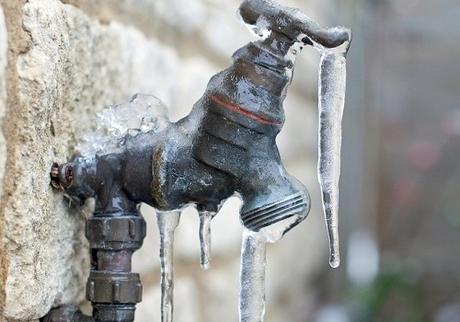Frozen Pipes is one of the effects of frigid weather during winter. Apart from the major problem of stopping the flow of water, the effects of frozen pipes in a home can be far-reaching. Frozen pipes most often lead to burst pipes, causing flooded homes and damaged properties.

According to the Insurance Institute for Business and Home Safety, damage from burst pipes can cost homeowners as much as $5,000. Homeowners that live in regions where sub-zero winters are common need to prepare, prevent, recognize and minimize the effects of frozen pipes. It is impossible to eliminate the occurrence of frozen pipes, a case in point is the cold freeze experienced in Texas U.S.A.
Many homeowners incurred huge losses as their houses flooded from gallons of water from burst pipes that were originally frozen. Here are some tips to help homeowners solve the frozen pipe problem.
Preventing Frozen Pipes
There are several ways to prevent frozen pipes, some of them are:
- Seal all cracks in the wall to prevent avenue for the freezing temperature to seep in. Utility lines are a major source for holes or cracks, check them thoroughly and block them.
- Drain water from pipes that are susceptible to freezing. Pipes that are outside the house like those for pools and sprinklers fall in this category.
- If you have gardening hoses, drain and store them in warm places like the garage. In addition, all the valves that supply these pipes are closed.
- Keep your faucets running, especially those connected to pipes susceptible to freezing.
- Keeping your kitchen cabinets open helps warm air to circulate. Do that to allow warm air around your pipes.
- In extremely cold weather, allowing your taps and faucets to drip cold water will minimize the incidence of freezing pipes.
- It might add to your electricity bill, but another way to prevent frozen pipes is to keep your thermostat at a temperature of at least 55⁰F.
- Have 60-watt bulbs close to pipes that have a high likelihood of freezing. The heat generated could lead to explosions, so ensure flammable substances are not close to the bulb.
It is possible that despite your best efforts your pipes still freeze. One of the surest signs to know this has happened is when you open your taps and no water comes out. Check your water mains to confirm it is on, if it is check around the house to ascertain there are no burst pipes.
If you are lucky enough not to have burst pipes, here are some ways to fix frozen pipes.
Fixing Frozen Pipes
- Call a professional, especially if the frozen pipe is close to or within the exterior wall. Look up Plumbing on Brisbane Southside, they offer homeowners excellent plumbing services. You should know that in times like this, there is usually a long waiting list for plumbing services.
There are some things that can be done while still on the waiting list for a plumber.
- One of the things to do is to apply continuous heat on the frozen pipe section until water flows. The safest sources of heat are an electronic heating pad or hairdryer. Another safe way of heating pipes is soaking thick clothes like towels are hot water and wrapping them around the pipes. When the flow rate normalizes, check other taps or faucets to see if other pipes are frozen.
Homeowners should make sure they do not leave the pipes during the heating process to prevent fire occurrence. Devices like kerosene stoves, charcoal stoves, blowtorches, candles, or any other source of open flame are not safe for use.
They are dangerous and a likely cause of fire hazards. When heating you should take care to ensure they are no flammable substance close by.
- Opening taps and faucets might help unfreeze taps. Open taps aid the thawing process and allow for speedy unfreezing.
What to Do in Case of Burst Pipes
Immediately you notice a burst pipe, immediately turn off the water supply at the mains. If the burst pipe contains hot water, shut it off at the valve at top of the heater. If both pipes are affected, the only way to shut off the pipes is at the street main supply.
To protect yourself from damage caused by freezing and burst pipes, you can opt to insure your home.
Conclusion
Frozen pipes cause more than the inconvenience of no running water in homes; they could lead to severe damage. These tips could be more than a lifesaver; they could help you save thousands of dollars in damage costs.
If you are experiencing winter or expect one, use these tips to ensure your pipes and homes are safe from frozen and burst pipes.
